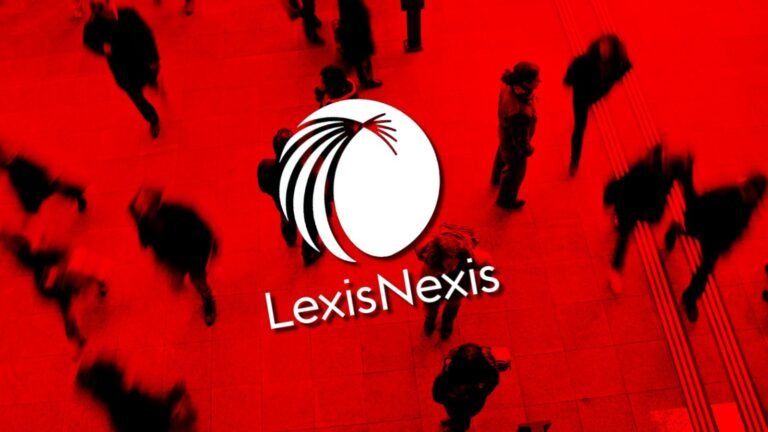Summary Points
-
Data Breach Details: LexisNexis Risk Solutions reported that over 364,000 individuals had their personal information stolen in a December 2024 breach linked to a compromised GitHub account.
-
Nature of Stolen Data: The breach involved personal information such as names, contact details, Social Security numbers, and driver’s license numbers, but there was no access to financial data.
-
Preventive Measures for Affected Individuals: LexisNexis advised those impacted to monitor for fraud and identity theft, offering two years of free identity protection and credit monitoring as a precaution.
- Company Overview: LexisNexis, a subsidiary of RELX, serves clients globally, including many Fortune 500 companies, highlighting its significant presence in the data analytics industry.
Underlying Problem
In a significant cybersecurity incident, LexisNexis Risk Solutions, an analytics behemoth based in Georgia, confirmed that over 364,000 individuals fell victim to a data breach that occurred in December 2024. This breach came to light during notifications sent to affected parties starting May 24, 2025, after LexisNexis received notice on April 1, 2025, of the unauthorized acquisition of sensitive personal information from GitHub by an unidentified assailant exploiting a compromised company account. Notably, the breach did not affect LexisNexis’s own networks, yet it exposed varying degrees of personally identifiable information—including names, contact details, and Social Security numbers—while leaving financial data untouched.
The report, disseminated to the Maine Attorney General’s Office, underscores the urgent need for vigilance among those impacted. LexisNexis, a subsidiary of the British multinational RELX, proactively urged affected individuals to monitor their financial accounts for potential fraud and identity theft, offering two years of complimentary identity protection and credit monitoring services as a remedy. Despite the scale of the breach, the company reassured stakeholders that there was no evidence of further misuse of the compromised data and emphasized its longstanding collaborations with major corporations and banking institutions globally.
What’s at Stake?
The breach at LexisNexis Risk Solutions, which compromised the personal information of over 364,000 individuals, poses significant risks not just to those directly affected, but also to a broader ecosystem of businesses, users, and organizations interconnected through shared data efforts. Given LexisNexis’s vast clientele, including a substantial number of Fortune 500 companies, the breach underscores vulnerabilities in data management and cybersecurity practices that could reverberate across various sectors. Organizations relying on LexisNexis for critical data analytics may find their operational integrity jeopardized, as they could inadvertently become conduits for misinformation or fraudulent activities resulting from identity theft. Furthermore, as affected individuals are urged to monitor their accounts and safeguard their identities, heightened consumer vigilance may diminish trust in associated businesses, consequently leading to potential reputational damage and financial loss. The incident exemplifies the far-reaching implications of data mishandling, where the interdependencies among corporations amplify the risks of cascading failures within the broader commercial landscape.
Possible Actions
Timely remediation is paramount when addressing data breaches, such as the recent incident involving LexisNexis, which has left approximately 364,000 individuals vulnerable. Prompt action can significantly mitigate risks associated with unauthorized access to sensitive personal information.
Mitigation Steps
- Immediate Notification: Inform affected individuals and stakeholders promptly.
- Identity Protection Services: Offer credit monitoring and identity theft insurance to impacted parties.
- Data Exposure Analysis: Conduct a thorough investigation to assess the extent of compromised data.
- Implement Security Patches: Update and strengthen existing security systems to prevent future breaches.
- Policy Review: Examine data management policies and make the necessary adjustments to prevent recurrence.
- Training and Awareness: Enhance staff training on data protection best practices and breach prevention.
- Legal Compliance: Ensure adherence to legal obligations for data breach notification and reporting.
NIST CSF Guidance
The NIST Cybersecurity Framework emphasizes the need for a robust incident response strategy to manage and mitigate risks associated with data breaches, underscoring the importance of identification, protection, detection, response, and recovery. For practical steps in defining policies and procedures, refer to NIST SP 800-61, “Computer Security Incident Handling Guide,” which provides detailed guidance on effective incident response.
Continue Your Cyber Journey
Explore career growth and education via Careers & Learning, or dive into Compliance essentials.
Learn more about global cybersecurity standards through the NIST Cybersecurity Framework.
Disclaimer: The information provided may not always be accurate or up to date. Please do your own research, as the cybersecurity landscape evolves rapidly. Intended for secondary references purposes only.
Cyberattacks-V1

